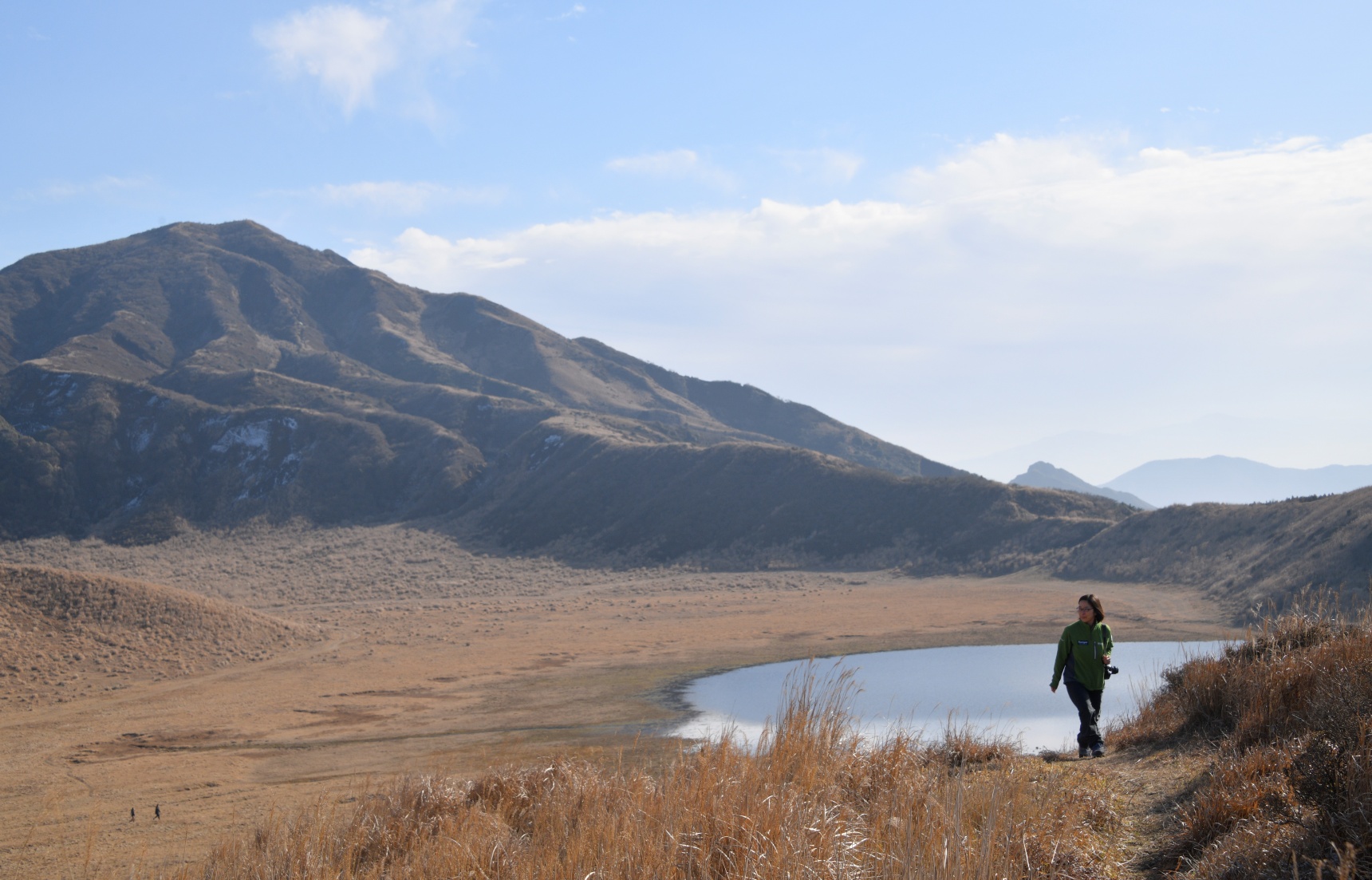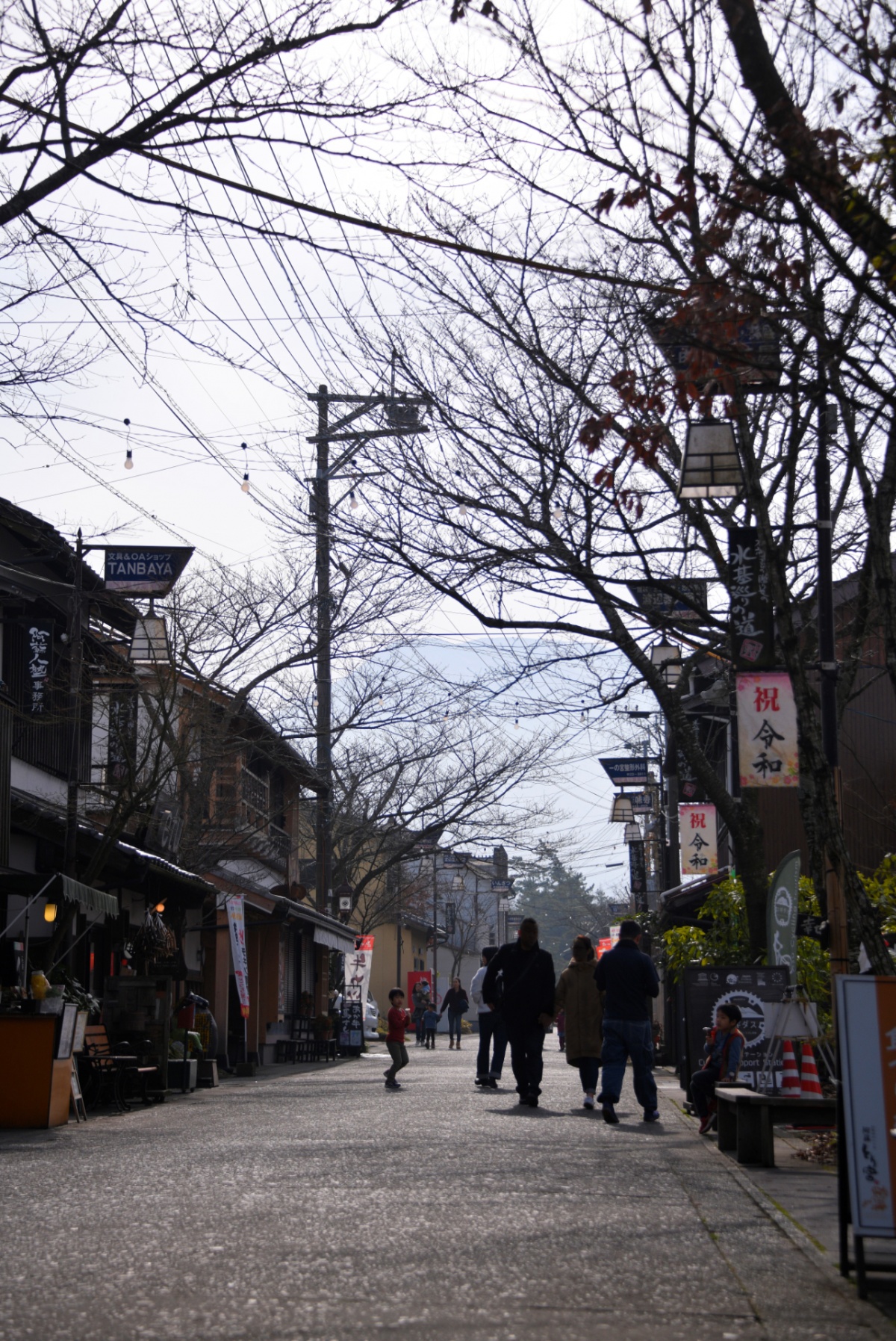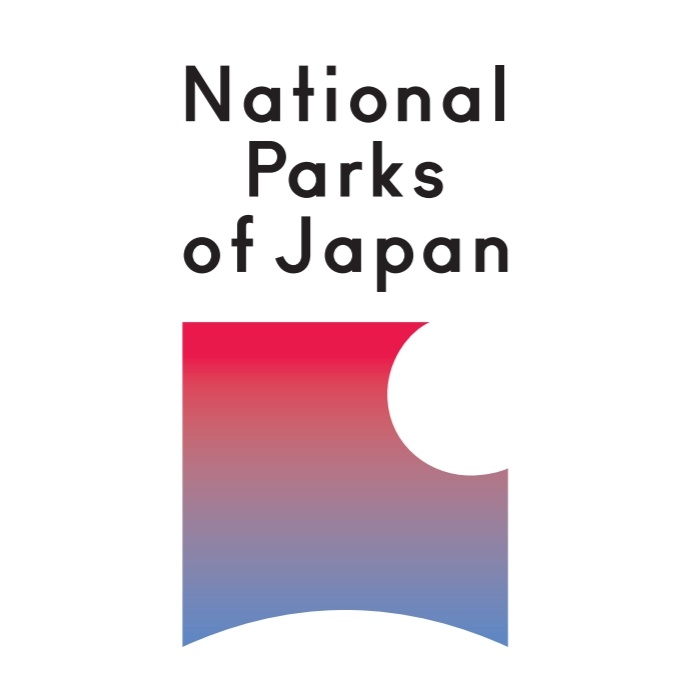An Incredible World in Miniature

A short journey from Kumamoto or Oita prefectures will bring you to Aso-Kuju National Park, one of the first areas in Japan to be designated a national park.
By National Parks of JapanResplendent Nature
Have you ever peered into an active volcanic crater? Aso-Kuju National Park is one of the few places in the world where you can! The crater in question is located on Mount Nakadake, one of the major peaks of Mount Aso, and the highest peak in Kyushu. Though Nakadake is active, it is closely monitored, and at times when it is considered to pose little danger visitors have the chance to look directly into its crater lake, which appears a mesmerizing emerald green in certain conditions. At other times, the volcano billows with smoke—although that makes the crater inaccessible, it gives spectators another look at the power of nature.
Speaking of nature: the other peaks of Mount Aso lie at the center of the Aso Caldera, which is one of the largest in the world, measuring about 25 kilometers north to south and 18 kilometers east to west. Its walls are a sight to behold: an immense natural perimeter formed thousands of years of volcanic activity.
The miniature world housed by the caldera is home to many verdant grasslands, including a pastoral 785,000-square-meter field called Kusasenri. One reason for its popularity is horseback rides, which give visitors the opportunity to explore the idyllic scenery the same way the region’s inhabitants have for centuries.
The national park also features another set of impressive peaks: the Kuju Mountain Range. This range is a favorite of hikers, and offers some gorgeous scenery; the surrounding mountains, rolling grasslands, and seasonal flowers.
Humans & Nature
There is evidence that humans have lived in the area of Aso-Kuju National Park for many millennia. The sustainable balance between humans and nature in the park is represented by several centuries-old traditions.
One such tradition is the Hifuri-Shinji Festival, where participants pray for a successful harvest by swinging flaming bales of hay. It’s a sight that lights up the evening with amazing patterns and sounds, and is a springtime must-see.
Another is a festival called the Onda Matsuri. Also related to the harvest, this one features a parade of women dressed in white from head to toe, who walk to the shrine while carrying ornate boxes full of offerings to the deities on their heads.

(Photo: A scene from Aso Shrine’s Onda Matsuri, which takes place in July.)
The focal point for both of these events is Aso Jinja Shrine, one of Japan’s oldest Shinto shrines. Though damaged in the Kumamoto earthquakes of 2016, the shrine is undergoing repairs to return it to its former splendor.
Another tradition that shows the long link between nature and civilization in the park is Noyaki, yearly controlled burnings of the fields. These burnings, which take place in late February and early March, prevent shrubs and trees from overtaking the rolling grasslands. Like many of Aso-Kuju’s traditions, this one stretches back hundreds of years.
The people of Aso-Kuju also have an intimate relationship with the park’s water, from naturally-flowing springs that supply fresh water for farming and drinking, to the multiple hot springs that supply both the day-use baths and Japanese inns throughout the area.
Food & Adventure
One great side effect of Aso-Kuju’s lush grasslands and fresh spring water is the variety of regional food! The list includes seasonal vegetables and milk, plus high-quality beef from a kind of cattle called akaushi. These cattle can be seen grazing in the grasslands around the park.
There are several shops and restaurants that make their own original dishes using Aso-Kuju’s plentiful food resources. From rice balls to cured beef and sausage to creamy cheese pudding, you’ll find many of these dishes on Monzen Shopping Street, a charming boulevard leading to Aso Jinja Shrine.

(Photo: The shops on Monzen Shopping Street sell many local dishes and goods from Aso.)
The natural features of the park also lend themselves to adventure. There are plenty of ways to take in the view while getting your heart rate up; horseback rides, cycle rentals, or even dedicated cycling tours. Meanwhile, those who really want to take in the view can ascend 40 meters above ground in a hot air balloon, or cruise over the grasslands with a paraglider!
Aso-Kuju National Park is close to the major cities of Kumamoto and Oita, yet has its own distinct atmosphere. From mesmerizing live volcanoes to rolling grasslands, with fresh ingredients and regional cuisine, adrenaline-pumping adventure and relaxing hot springs, it’s truly an entire world in miniature.
Discover more of Aso-Kuju National Park here!



